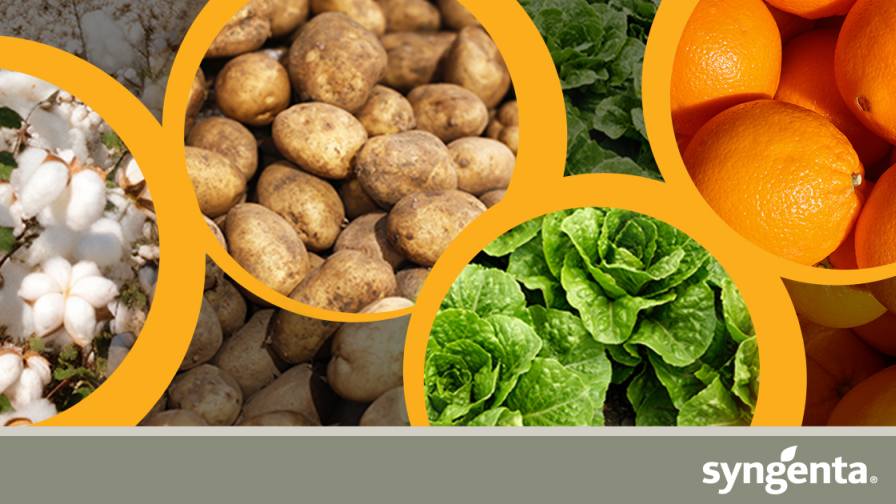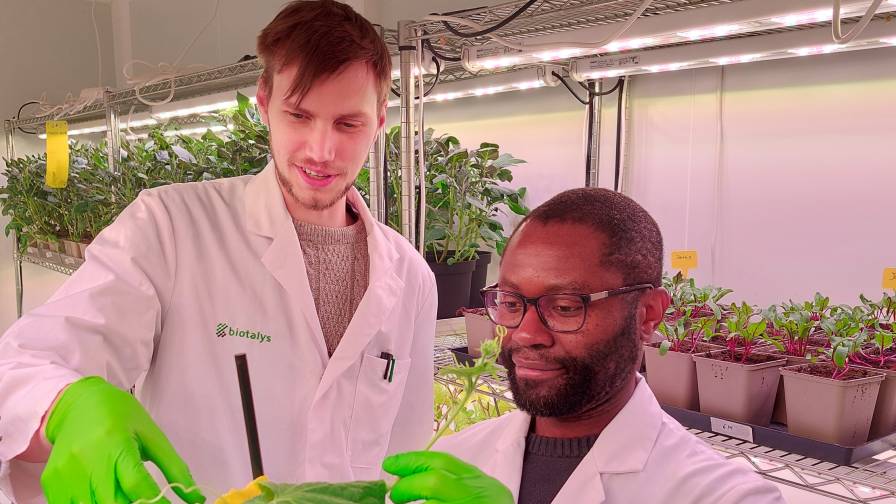Country Report: China
This is no ordinary morning meeting. It begins with a controlled chaos as workers scurry about the reception area of Shandong Kesai Eagrow’s modest office in Jinan, frantically filing last-minute missives and calling out orders as they speed-walk past the reception desk. It resembles a parliamentary office on the day of a big vote more than the everyday operations of a US $35 million agrochemical company.
Then precisely at 8:20 a.m., complete order emerges from the commotion. Workers align shoulder-to-shoulder in two perfect lines facing each other in front of the reception desk. Another two lines form in the perpendicular hallway. All of Eagrow’s office employees are here, hands at their side, facing forward and eager to start the day.
Music pipes throughout the offices and employees sing together. Then, the day’s team leader stands on a small steel table to address the workers. She talks in a strictly metered cadence, and the rest of the office responds in unison and periodically clap in a show of solidarity and teamwork.
“Every day our morning meetings help us focus our staff and set goals and expectations,” says Robin Yin, director of the four-year-old company. “Our average age is 25, so we have a very young corporate culture, and we consider ourselves family. We encourage our workers to study each other and themselves their whole lives so that we can learn and grow together. We love the company. We’ve had employees leave for more money and ask to come back because they miss the family.”
Loyalty has been a linchpin for growth. The company began with 19 people in 2005, and now it has two factories and more than 1,000 employees. It does about 60% to 70% of its business domestically with the remainder in export markets, and the company expects its exports to rise, specifically in Africa, Asia and South America. It just migrated to a prepayment business model to ensure proper cash flow at a time when many agrochemical companies of similar size are struggling to secure liquidity.
The team culture and business practices at Eagrow represent a growing sophistication among Chinese producers. After three decades of trading with the outside world, many companies are creating more collaborative corporate cultures that emulate their trading partners, and they are modernizing their business practices and manufacturing processes to compete in an increasingly competitive marketplace domestically as well as abroad.
China is rife with change. Technology and environmental stewardship are emphasized with almost every government and association statement. “We need to focus on the development of technology for the future of this industry,” Zhao Jun Gui told opening session attendees of the 2009 China International Agrochemical & Crop Protection Exhibition (CAC) in March. He is the vice chairman and secretary general of the China Petroleum and Chemical Industry Association, which is the former Ministry of Chemicals.
In an exclusive interview with FCI, Zhao highlighted China’s emphasis on its governmental policies of progress, growth and sustainable development, which the country has struggled to find amid the meteoric rise of its production capacity in many sectors, including chemical production, construction and manufacturing. Regulators now see the value in incubating high-tech production to help create an industry that stays competitive in the global marketplace.
“In my opinion, China has funding in place that will encourage technological innovations and research,” Zhao told FCI. “The petrochemical industry is very important for China’s economy because it makes up 14% to 15% of the GDP of China, and it is very important to other industries in China as well.”
Although specifics to China’s government stimulus are still being debated in Beijing, Zhao said the government is considering price guarantees for growers and price stabilization policies for crop protection products to avoid the wild fluctuations that occurred with herbicides last year. Prices of about 47% of China’s 1,148 chemical products fell in 2008, prices rose for just 5% of products.
The government’s current subsidy for growers is about $11.2 million, which is a large enough incentive for growers to return to their farms in lieu of factory work, according to Chen Zhibin, an agrochemical industry analyst with Shanghai Securities. The subsidy is widely expected to succeed, especially in the wake of lower factory output in large cities that forced about 20 million migrant workers out of their jobs.
New land-maintenance policies in China might help wider adoption of agrochemicals as well. Beginning late last year, China will allow the operating rights of farmland to be transferred from person to person. Previously, if a grower vacated his land to find work in a factory, then the land would sit idle. Now, the operating rights can transfer, which could create larger farms run by more sophisticated growers who are more likely to invest in crop protection products.
Peer Pressure
While the Chinese government continues to tweak its policies to adapt to a rapidly changing domestic and global marketplace, the biggest influences to agrochemical producers come from each other. Fierce competition is perpetuating the inevitable shakeout that China is about to experience. With thousands of formulators and technical suppliers, the rising sophistication in Chinese manufacturing means that smaller, less automated companies without environmental safeguards will no longer remain competitive amid lower prices for crop protection products and more expensive raw materials.
The astoundingly high glyphosate prices from last year allowed many smaller companies to enter the market and be profitable. Amid lower prices this year and more pressure from the government for sustainable manufacturing, the country’s competition is weeding out the smaller manufacturers. Only three
Chinese producers made glyphosate in 2007; there were 13 one year later, says Wicky Wang, president of Shandong Rainbow Chemical Co. But not all of them will last. Rainbow has grown from a $100,000 company in 2000 to about $350 million in revenues in 2008 with 1,100 workers. Its success is partly due to outcompeting other Chinese producers with more efficient operations. Now the company is upgrading its automation and environmental efficiency to capture more incremental revenue.
“We are trying to increase market share,” Wang says. “For glyphosate, 2,4-D and atrazine (the company’s three products), there are few producers outside of China, so we are in a situation where all of our competition is domestic.”
Domestic competition means that everyone plays by the same import and export regulations, creating a fairly even playing field within the country, which puts a premium on strong management and technological innovation.
In fact, innovation might be necessary for survival.
Many industry observers believe the country’s 2,400 producers will consolidate into just a few hundred in less than 10 years, and that competition combined with government regulation means that companies like Rainbow must improve technological innovation to navigate the new sea of more sophisticated producers.
“Environmental requirements, registrations and governmental regulations are getting more stringent, so our costs are getting higher, but so is everyone else’s,” Wang says. “So we are trying to take advantage of automation and technology to be better as a local producer to compete with larger companies.”
Sound Business
The burgeoning manufacturing sophistication, management and corporate philosophies of many Chinese companies instill confidence among trading partners abroad and differentiate them from the pack of producers that have substandard upgrades at their facilities.
Ensuring consistency and quality in products has been a hallmark of Nanjing-based Trustchem Co., which established an independent laboratory to test each of its shipments for accuracy and uniformity in its labeled products.
“We only trust ourselves, and we have two full-time employees who supervise shipments and quality,” says Trustchem General Manager Susan Dee. “People do business with people they trust, and that’s how we build that trust. You must be predictable to capture more market share.”
Trustchem’s predictability appears to be working. In 2004, the company grossed $15 million. Its revenue nearly doubled every year through its $100-million year last year, and it expects to reach $120 million in product sales this year. The company has operations in 50 countries, and its branded products have significant recognition in Ukraine, Russia and Australia.
This reputation isn’t always easy to preserve, especially when operating in a country where some companies cut corners, and sometimes even break the law. The rise in the prices of raw materials are affecting the potential margins for Trustchem’s 20 products. There are about 3,000 providers of raw materials in China, but only a few have the capacity to supply larger agrochemical manufacturers. Out of the ones that do, only a fraction of the producers are legally licensed. So despite the large number of suppliers, only a few are worthy of the Trustchem’s supply chain.
Those who might be willing to do business with unlicensed partners could give them a competitive edge in the highly competitive Chinese market. Similarly, Chinese export tariffs favor technical products by giving larger rebates to technical exports in an attempt to keep more formulated products on hand for domestic consumption. But some suppliers will ship formulated products with technical labels, thereby garnering a larger rebate and simultaneously taking market share away from legitimate enterprises, says Ameya Li, vice president of Limin Chemical Co. in Nanjing.
“When some players export formulated products by the name of technical, it causes disorder and disparity in competition in China,” Li says.
Limin specializes in chlorothalonil and mancozeb, the prices of which are less volatile than herbicides. They are also gaining in popularity worldwide. Fungicides posted the biggest gain with 31.7% growth as it became the second most profitable class of crop protection products.
“In 2008, fungicides overtook insecticides for the first time,” Phillips McDougall partner Matthew Phillips told CAC attendees. “And China, in particular, has a lot of opportunity for fungicide growth.”
More fungicide and insecticide production is a key strategy for Chinese companies looking to get ahead of competitors. And with manufacturing innovations and business models that ensure cash flow, companies that comprise the core of the industry has secured their places as trusted global partners. And it’s clear producers are being incubated in China and extremely prosperous in the past decade, especially as they are increasingly compared to broader financial markets.
“Pesticide stocks are outperforming the Heng Seng index,” says Chen of Shanghai Securities, adding that analysts consider chemical production a high-growth market with great potential. That confidence could result in cash infusions that could help Chinese producers become powerhouses in their own right.
“If you want a scaled economy and future prosperity, you must secure the support of the financial markets,” Chen continues. “This market is merging, and there is a lot of space for further development.”






